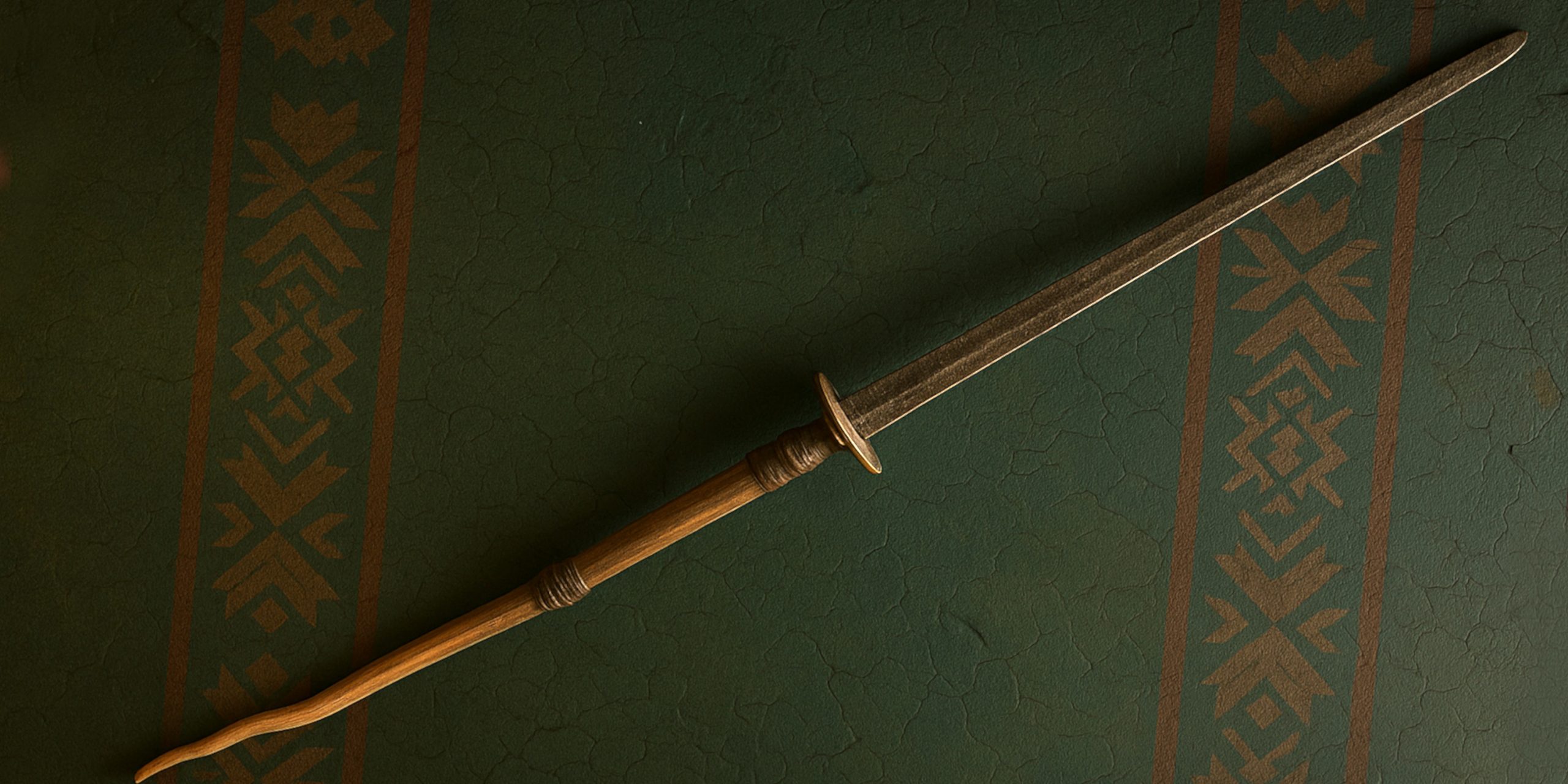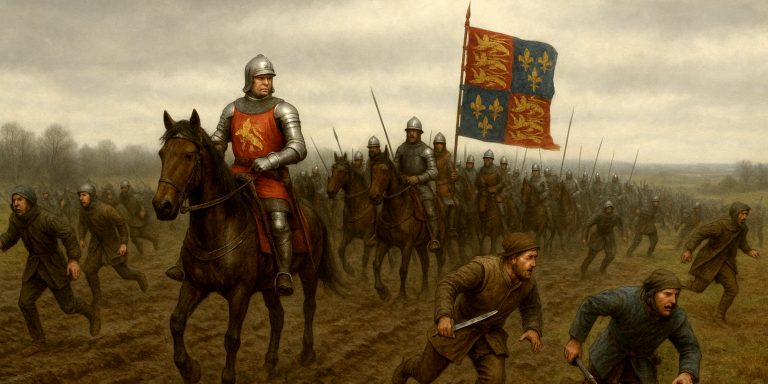
The Southern Plains sword lance spear was a distinctive hybrid weapon used by the mounted warriors of the Comanche, Kiowa, Southern Cheyenne, and other horse cultures of the 18th and 19th centuries. Combining the reach of a lance with the cutting edge of a sword, it represented both ingenuity and adaptation. Often constructed from traded materials and repurposed blades, it became an emblem of martial identity and craftsmanship on the frontier.
Specification
| Feature | Description |
|---|---|
| Type | Sword-lance hybrid (piercing and slashing polearm) |
| Origin | Southern Plains, North America |
| Period Used | c. 1750–1880 |
| Users | Comanche, Kiowa, Southern Cheyenne, Arapaho |
| Overall Length | Typically 6 to 8 feet (1.8–2.4 m) |
| Blade Type | European trade sword blade (often cut-down cavalry sabres or hunting swords) |
| Blade Length | 24 to 30 inches (60–75 cm) |
| Shaft Material | Ash, hickory, or native hardwood, often wrapped in hide or cloth |
| Mounting | Blade socketed or lashed with sinew and metal binding |
| Decoration | Feathers, beadwork, dyed horsehair, or quillwork |
| Weight | Approx. 2.5–4 kg depending on shaft length and fittings |
History and Evolution
- Origins in Trade and Adaptation
As European traders and settlers pushed westward, steel blades became available through commerce and conflict. Plains tribes rapidly adopted and modified these materials, integrating sword blades into their own martial traditions. - Comanche Innovation
The Comanche, renowned for their horsemanship, are often credited with popularising the sword lance. Their emphasis on mobility and shock tactics made the combination of slashing and thrusting capabilities ideal. - Design Refinement
Earlier versions featured crude bindings or softwood shafts, but by the mid-19th century, craftsmen were using metal collars and sinew wraps for reinforcement. Decorative elements, such as beadwork or scalp locks, gave each weapon personal or spiritual meaning. - Decline and Transformation
By the 1880s, with the end of large-scale intertribal warfare and the reservation period beginning, the sword lance evolved into a ceremonial and symbolic weapon, preserved in dances and cultural pageantry rather than on the battlefield.
Advantages and Disadvantages
| Advantages | Disadvantages |
|---|---|
| Excellent reach and cutting ability from horseback | Difficult to use on foot due to length |
| Versatile for both slashing and thrusting attacks | Requires great balance and horsemanship |
| Adaptable from available trade materials | Binding points could weaken with repeated impact |
| Visually intimidating and status-signalling | Less effective against firearms or bayonets |
Comparison with Similar Weapons
| Weapon | Comparison |
|---|---|
| European Cavalry Sabre | The sword lance used the same type of blade but extended its reach through a wooden shaft. It was lighter in hand-to-hand combat but deadlier from horseback. |
| Native Plains Lance | Traditional lances were purely piercing weapons. The sword lance added cutting capability but lost some of the lightness of the classic lance. |
| Japanese Naginata | Both weapons combined reach with a cutting edge, though the naginata was designed for infantry combat, not mounted warfare. |
| Zulu Iklwa Spear | The iklwa was a short stabbing spear used on foot, highlighting how the Plains design was uniquely suited to mounted combat. |
Legacy
The sword lance became more than a weapon; it symbolised the warrior’s spirit and identity. In museums and private collections, these hybrids are valued as expressions of cultural adaptation and artistry. Each weapon tells a story of survival and creativity during an era of dramatic change across the Great Plains.
Today, the sword lance remains a fixture in ceremonial dances, living history demonstrations, and equestrian displays celebrating Native American heritage. Its form also influenced decorative lances and flags used in tribal events.
Where to See
| Location | Collection |
|---|---|
| National Museum of the American Indian (Washington, D.C.) | Features Southern Plains lances and sword lances with trade blades |
| Panhandle-Plains Historical Museum (Texas) | Holds examples attributed to Comanche and Kiowa craftsmanship |
| Cowboys & Indians Heritage Museum (Oklahoma) | Displays both authentic and reconstructed Plains lances |
| British Museum (London) | Houses several Plains artefacts obtained via 19th-century expeditions |
Collectors Guide
Authenticity Markers
- Hand-forged European or American trade blades (look for Solingen, Sheffield, or Collins marks).
- Hide or sinew bindings rather than modern wire or epoxy.
- Ageing of wood and metal consistent with mid-19th century exposure.
- Provenance from museum or private tribal collections.
Auction Prices (Recent Trends)
| Condition | Estimated Price (GBP) | Notes |
|---|---|---|
| Museum-grade example with original bindings | £8,000–£15,000 | Often found in institutional collections |
| Verified 19th-century piece with partial restoration | £4,000–£8,000 | Occasionally sold at Bonhams or Heritage Auctions |
| Replica or ceremonial reproduction | £300–£1,000 | Common in private decorative collections |
Buying Advice
- Verify provenance documentation and expert appraisal.
- Avoid over-cleaned or re-bladed examples.
- Condition and authenticity of decorative elements (feathers, quillwork) heavily influence value.
- Well-preserved bindings and shaft integrity increase both aesthetic and monetary worth.
Sevenswords Takeaway
The Southern Plains sword lance spear stands as a testament to innovation on the frontier. It embodied the merging of two worlds: European metallurgy and Native American craftsmanship. As both a battlefield weapon and cultural emblem, it bridged eras of conflict and artistry. Today, it survives as a rare symbol of the Southern Plains warrior’s adaptation, pride, and mastery of the horse.



